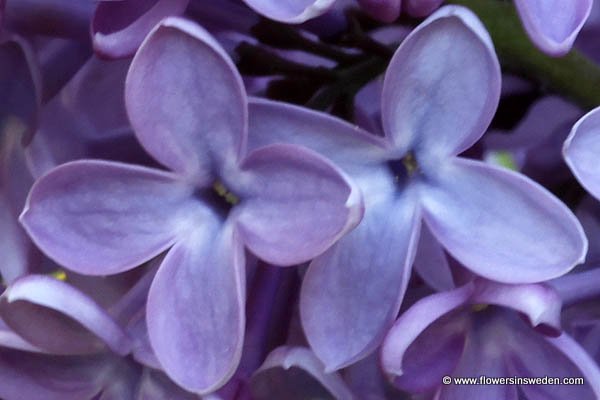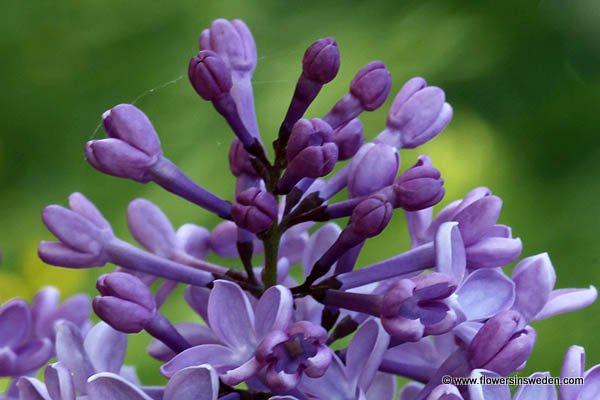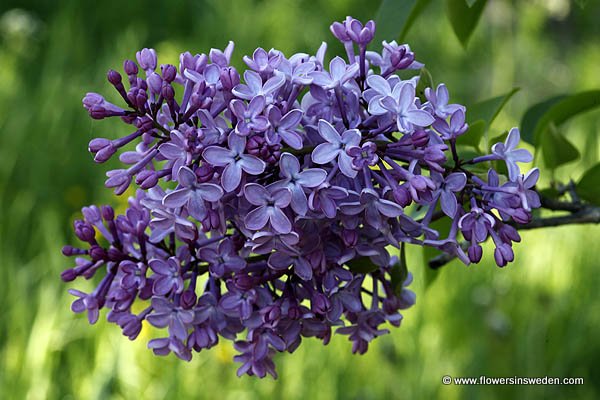|
|
| Life form: |
| Deciduous shrub or small tree 2-5 m tall. |
| Stems: |
| light-gray bark; smooth; stems are stout; small, raised lenticels; raised leaf scars |
| Leaves: |
| Opposite, deciduous, simple, petiolate; blade 4-10 cm long, broadly ovate, with a ± acute apex and usually a cordate base and entire margins, glabrous. |
| Flowers: |
| Hermaphrodite, Lilac, white, tubular corolla with open four-lobed apex across; stamens 2, with the base of their filaments fused to the corolla; gynoecium syncarpous, 2-carpellate, with a superior ovary, arranged in a dense terminal panicle. |
| Flowering Period: |
| May, June |
| Fruits: |
| Dry, smooth brown capsule; capsules borne in large panicles
capsules located at the terminal tips of branches; capsules are beaked |
| Habitat: |
| Grown in gardens and parks |

Derivation of the botanical name:
Syringa, Greek syrinx, a pipe, and refers to the hollow stems; Lilac.
vulgaris, common.
- The standard author abbreviation L. is used to indicate Carl Linnaeus (1707 – 1778), a Swedish botanist, physician, and zoologist, the father of modern taxonomy.

|



